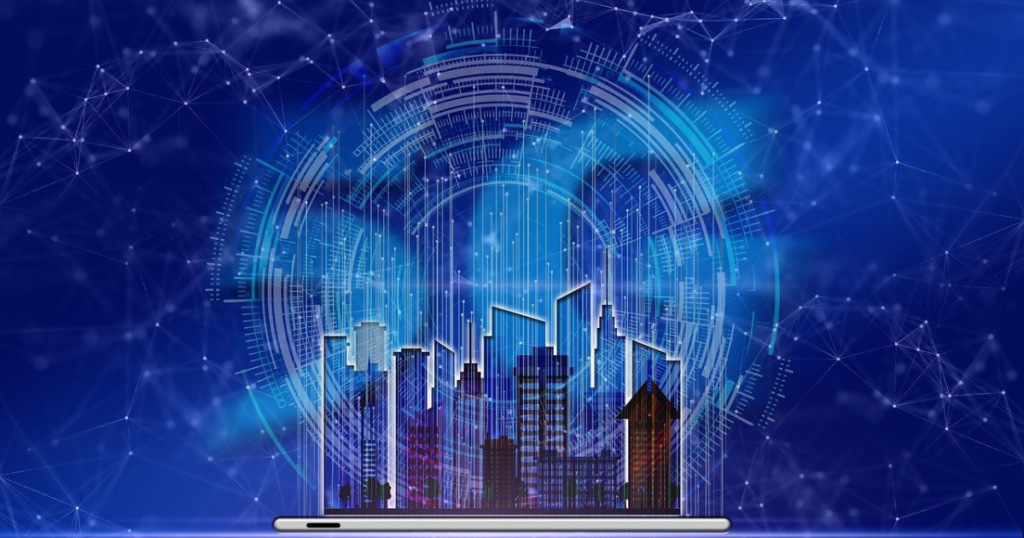5G technology represents the next major leap in wireless communications, offering faster data speeds, lower latency, and a more robust network infrastructure that promises to transform industries, economies, and daily life. As we enter the era of 5G, its impact will be profound, ranging from revolutionizing mobile connectivity to enabling innovations like smart cities, autonomous vehicles, and the Internet of Things (IoT). This blog takes a deep dive into 5G technology, exploring its technical foundations, applications, benefits, and challenges.
What is 5G Technology?
5G, or fifth-generation wireless technology, is the latest iteration of mobile networks designed to increase the speed and responsiveness of wireless communication. It is an evolution from previous generations like 4G LTE, which brought about significant improvements in mobile internet and communication. However, 5G is not just about faster speeds; it is a complete overhaul of network infrastructure, introducing new capabilities that will enable innovations in various fields.
5G networks are built on three key pillars:
- Enhanced Mobile Broadband (eMBB): This pillar focuses on delivering ultra-fast data speeds, making activities like streaming high-definition content, virtual reality (VR), and augmented reality (AR) smoother and more immersive.
- Ultra-Reliable Low Latency Communication (URLLC): URLLC is critical for applications that require real-time data transmission, such as autonomous vehicles, remote surgeries, and industrial automation.
- Massive Machine-Type Communication (mMTC): This aspect of 5G is designed to support the massive scale of connected devices in the Internet of Things (IoT), from smart home appliances to large-scale industrial sensors.
Technical Foundations of 5G
To understand how 5G achieves these capabilities, it’s important to delve into its underlying technologies and network architecture.
- Spectrum and Frequency Bands:
- 5G operates across three primary frequency bands: low-band, mid-band, and high-band (also known as millimeter-wave or mmWave). Each frequency band offers different trade-offs between coverage, speed, and latency.
- Low-band spectrum: This provides broad coverage and can penetrate walls and obstacles but offers relatively lower speeds, comparable to 4G. It is ideal for rural and suburban areas where wide coverage is necessary.
- Mid-band spectrum: Offering a balance between coverage and speed, mid-band provides faster speeds than low-band but with slightly reduced coverage. It is expected to be the primary band for 5G in urban and suburban areas.
- High-band (mmWave): The high-band spectrum offers the fastest speeds and the lowest latency, making it ideal for dense urban environments and applications that require ultra-fast data transfer. However, mmWave has a limited range and struggles with obstacles like buildings, necessitating a dense network of small cells.
- Small Cells and Beamforming:
- Small Cells: Unlike 4G networks, which rely on large cell towers covering wide areas, 5G networks are built with small cells—miniature base stations placed closer together. These small cells help overcome the limitations of the high-band spectrum, ensuring that 5G networks can deliver high speeds even in dense urban areas.
- Beamforming: Beamforming is a technique that directs a concentrated signal towards a specific user or device rather than broadcasting it in all directions. This enhances the efficiency of 5G networks by reducing interference and improving signal quality, particularly in crowded environments.
- Massive MIMO (Multiple Input, Multiple Output):
- Massive MIMO technology enables 5G networks to handle more data simultaneously by using multiple antennas at the base station to send and receive data from multiple users at once. This improves network capacity and allows 5G to serve more devices without compromising on speed or performance.
- Network Slicing:
- One of the revolutionary aspects of 5G is network slicing, which allows the network to be partitioned into multiple virtual slices, each optimized for specific applications or services. For example, one slice might prioritize ultra-reliable low-latency communication for autonomous vehicles, while another focuses on providing high-speed mobile broadband for users in the same area. This flexibility enables 5G to cater to a wide range of use cases simultaneously.
- Edge Computing:
- 5G’s low latency is further enhanced by edge computing, which involves processing data closer to the user rather than in a centralized data center. By bringing computation and storage closer to the edge of the network, 5G can reduce latency and improve the performance of real-time applications like gaming, VR, and IoT devices.
The Impact of 5G on Various Industries
5G is poised to revolutionize numerous industries by enabling new applications and improving existing processes. Below are some of the key sectors that will experience significant transformation with the adoption of 5G technology.
- Healthcare:
- 5G will transform healthcare by enabling telemedicine, remote surgeries, and real-time monitoring of patients through connected medical devices. The ultra-reliable, low-latency communication offered by 5G is critical for applications like robotic surgery, where even a slight delay in data transmission can have serious consequences.
- Wearable health devices that monitor vital signs and track fitness metrics will become more accurate and provide real-time feedback to healthcare professionals, enabling personalized treatment plans and early intervention for medical conditions.
- Manufacturing and Industry 4.0:
- The manufacturing sector will benefit from the implementation of smart factories powered by 5G. These factories will use connected machines and sensors to optimize production processes, reduce downtime, and improve overall efficiency.
- Predictive maintenance, where machines are monitored in real-time to detect and address issues before they cause failures, will be made possible by 5G’s ability to handle massive amounts of data from connected devices.
- Additionally, 5G will support the deployment of autonomous robots in manufacturing plants, improving automation and enabling more flexible production lines.
- Transportation and Autonomous Vehicles:
- 5G is crucial for the development and deployment of autonomous vehicles. Self-driving cars require real-time communication with other vehicles, infrastructure, and traffic management systems to navigate safely. 5G’s low latency ensures that data is transmitted instantaneously, reducing the risk of accidents and improving traffic flow.
- Beyond autonomous cars, 5G will also enable innovations in public transportation, such as smart buses and trains that communicate with each other and traffic systems to optimize routes and schedules, reducing congestion and improving efficiency.
- Smart Cities:
- The concept of smart cities will become a reality with the widespread adoption of 5G. Connected sensors and devices will monitor everything from traffic and public transportation to energy usage and waste management, enabling cities to operate more efficiently and sustainably.
- For example, smart traffic lights that adjust in real-time based on traffic flow will reduce congestion, while connected streetlights will save energy by dimming when no one is around. Public safety systems will also be enhanced, with real-time monitoring of security cameras and emergency response systems powered by 5G.
- Entertainment and Media:
- The entertainment industry will undergo significant changes as 5G enables new ways of consuming and interacting with content. Augmented reality (AR) and virtual reality (VR) experiences, which require high bandwidth and low latency, will become more immersive and accessible to a broader audience.
- 5G will also revolutionize live events and sports by enabling multi-angle streaming, real-time interactions with performers, and augmented reality overlays that enhance the viewing experience. For example, fans at a sports stadium could use AR glasses to view player stats in real-time or watch replays from different angles.
- Mobile gaming will reach new heights with 5G, as players can enjoy high-quality, low-latency gaming experiences on the go, without the need for a powerful console or PC.
- Retail and E-commerce:
- Retailers will leverage 5G to enhance the customer experience through technologies like augmented reality shopping, where customers can try on clothes or visualize furniture in their homes before making a purchase. These experiences will be powered by 5G’s ability to deliver high-quality visuals and real-time interactivity.
- In-store experiences will also evolve, with smart shelves, personalized promotions, and automated checkout systems becoming more prevalent. 5G will enable seamless communication between these systems, ensuring a smooth and efficient shopping experience for customers.
Global Economic Impact of 5G
The economic implications of 5G are significant. According to various studies, 5G technology is expected to generate trillions of dollars in economic output over the next decade. Its impact will be felt across industries, leading to increased productivity, new business models, and job creation.
- Productivity Gains:
- 5G will boost productivity by enabling automation, real-time data analysis, and improved communication across industries. For example, smart factories will optimize production processes, while real-time data from IoT devices will allow businesses to make more informed decisions.
- New Business Models:
- The capabilities of 5G will give rise to new business models that were not possible before. For instance, the rise of cloud gaming, where games are streamed rather than downloaded, will change the way the gaming industry operates. Similarly, remote surgeries and telemedicine will revolutionize healthcare delivery.
- 5G will also facilitate the growth of the gig economy, with faster and more reliable networks enabling new types of remote work and on-demand services.
- Job Creation:
- The deployment of 5G networks and the growth of industries powered by 5G will create millions of jobs. This includes jobs in network infrastructure development, software development, and industries that leverage 5G for their operations, such as healthcare, manufacturing, and entertainment
Challenges and Considerations in 5G Deployment
While 5G offers immense potential, its deployment comes with several challenges that need to be addressed.
- Infrastructure Requirements:
- Deploying 5G networks requires significant investment in infrastructure, including new antennas, base stations, and fiber-optic cables. This is particularly challenging in rural and remote areas where the economic incentive for deployment is lower.
- The installation of small cells in urban areas can also face regulatory hurdles and public opposition due to concerns about aesthetics and potential health risks.
- Security Concerns:
- The expansion of 5G networks brings new security challenges. With more devices connected to the network, the potential attack surface for cybercriminals increases. Ensuring the security of 5G networks will require advanced encryption, authentication protocols, and continuous monitoring of threats.
- Governments and industry leaders will need to collaborate to establish global security standards for 5G, ensuring that networks are protected from cyberattacks and data breaches.
- Energy Consumption:
- While 5G is more efficient in terms of data transmission, the increased number of connected devices and the infrastructure required for high-band spectrum can lead to higher overall energy consumption. Addressing this challenge will require innovations in energy-efficient network design and the use of renewable energy sources.
- Digital Divide:
- As 5G networks roll out, there is a risk that certain regions, particularly rural and underserved areas, may be left behind. Ensuring that 5G technology is accessible to all, regardless of geographical location or socioeconomic status, will be crucial in bridging the digital divide and ensuring that everyone benefits from the advancements brought by 5G.
Conclusion
5G technology represents a monumental leap forward in wireless communication, offering faster speeds, lower latency, and increased capacity for a wide range of devices and applications. Its impact will be felt across numerous industries, from healthcare and manufacturing to entertainment and transportation, driving innovation and economic growth.
However, the successful deployment of 5G will require addressing challenges related to infrastructure, security, energy consumption, and digital inclusion. As 5G networks continue to roll out globally, collaboration between governments, industry leaders, and communities will be essential to ensure that this transformative technology reaches its full potential.
The future of connectivity is here, and with it comes a world of new possibilities powered by 5G.



